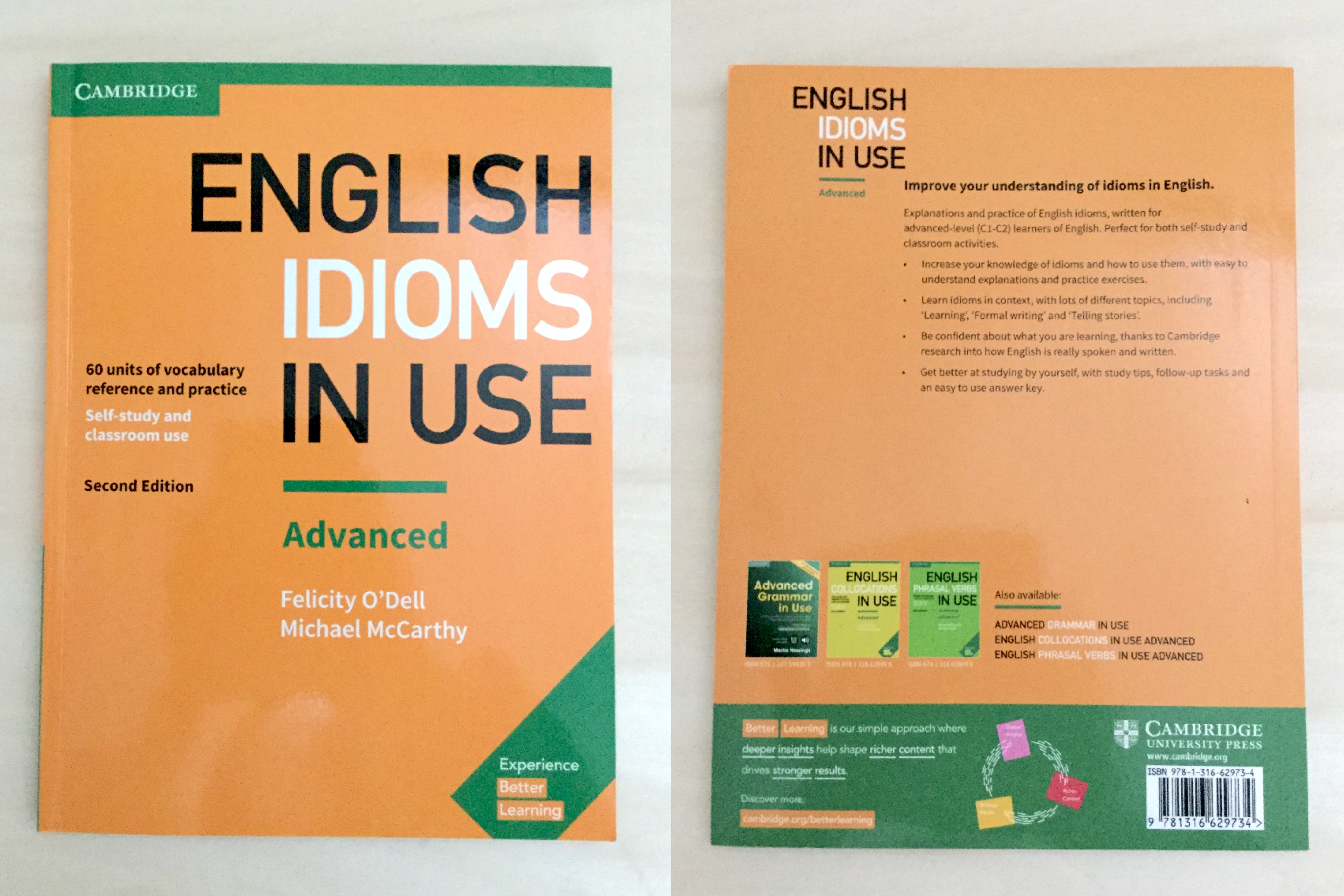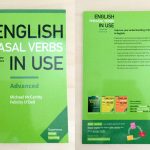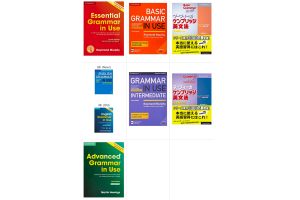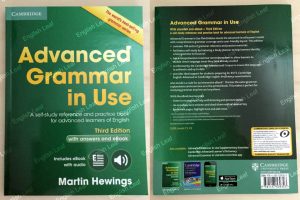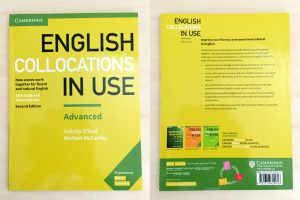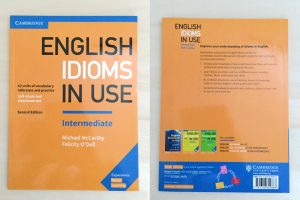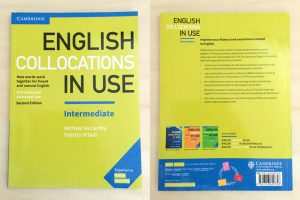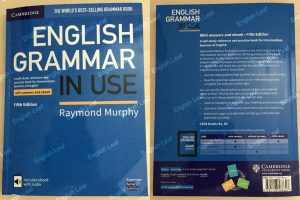【文法書のバイブル! English Grammar in Useシリーズの種類と選び方】も確認する
English Grammar in Useからのイディオム上級
Idiomsは英語を話すときに頻出するため、英語学習をするときには無視することのできないものです。また、Idiomsを知らないと会話の中で意味を取り違えてしまい、思わぬ誤解に発展するかもしれません。本書は、Idiomsの意味や使い方について扱っています。中級と上級にレベルが分けられていて、本書は上級です。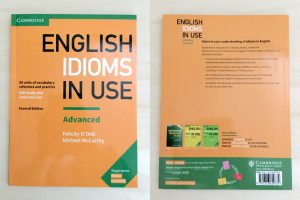
Contents
Acknowledgements
Using this book
Learning about idioms
In this section the units deal with key aspects of what idioms are and how you can use them.
1 What are idioms?
2 When and how are idioms used?
3 Using reference resources
4 Common metaphors in idioms
5 Using idioms accurately
6 Playing with idioms
7 Idioms from other varieties of English
8 Modern idioms
Types of idiom
In this section the units deal with specific types of idiom.
9 Similes
10 Binomials
11 Proverbs
12 Clichés and fixed statements
13 Other languages
Idioms from the topic area of …
In this section the units are organised around the aspect of life from which the idioms have originated.
14 Sailing
15 War and conflict
16 Transport
17 Animals
18 Parts of the body
19 Games and sport
20 Ancient myths and history
21 Shakespeare
22 Literature
23 Learning
24 Science and technology
Idioms to talk about …
In this section the units are organised around the topic or functional area where they are most likely to be used.
25 Films, plays and books
26 Relationships – friends and family
27 People – character and behaviour
28 Crime and punishment
29 Work
30 Business news
31 Business meetings
32 Money
33 Society
34 Daily life
35 Positive feelings
36 Negative feelings
37 Problems
38 Arguing
Idioms used in … This section focuses on some of the written contexts where idioms are frequently found.
39 Journalism
40 Advertising
41 Formal writing
Idioms used in conversation
This section focuses on ways in which idioms are typically used in spoken language.
42 Advising and warning
43 Telling stories
44 Responding to what people say
45 Agreeing and disagreeing
46 Expressing success and failure
47 Emphasising
Idioms using these keywords: In this section each unit focuses on one keyword which has given rise to a particularly large number of English idioms.
48 Play and game
49 Half
50 TWO
51 All
52 No
53 Hand
54 Heart
55 Life and live
56 Dead and death
57 Mind
58 Hard
59 Fall
60 Own
Key
Phonemic symbols
Index
Acknowledgements
Joy Godwin wrote two new units for the Second Edition: Unit 23, Learning, and Unit 38, Arguing. The publishers would like to thank Joy for her contribution to this edition,
The authors and publishers acknowledge the following sources of copyright material and are grateful for the permissions granted. While every effort has been made, it has not always been possible to identify the sources of all the material used, or to trace all copyright holders. If any omissions are brought to our notice, we will be happy to include the appropriate acknowledgements on reprinting & in the next update to the digital edition, as applicable.
Key: TR = Top Right
Using this book
Why was this book written? It was written to help you take your knowledge of idioms to a more advanced level. The ability to use idioms accurately and appropriately is an indicator that you have a truly advanced level of English, and so this book pays attention to the productive use of idioms as well as to the comprehension of their meaning. Many of you will have already worked with English Idioms in Use Intermediate, and this book builds on the work done there. However, it does not matter if you have gained your knowledge of idioms in a different way. We do not assume that you have used English Idioms in Use Intermediate, although we do present and practise different idioms from those that were presented in the lower-level book.
How were the idioms in this book selected?
The idioms which are presented in this book were mainly selected from those identified as significant by the CANCODE corpus of spoken English, developed at the University of Nottingham in association with Cambridge University Press, and the Cambridge International Corpus of written and spoken English (now known as the Cambridge English Corpus). The idioms selected are all also to be found in the Cambridge Advanced Learner’s Dictionary 4th Edition, where you can find additional usage notes and examples. You can search this dictionary online by going to the following website:
http://dictionary.cambridge.org
How is the book organised?
The book has 60 two-page units. The left-hand page explains the idioms that are presented in the unit. You will usually find an explanation of the meaning of the idiom, an example of it in use and, where appropriate, some comments on when and how it is used. The exercises on the right-hand page check that you have understood the information on the left-hand page and give you practice in using the material presented.
The units are organised into seven sections:
Learning about idioms (Units 1-8) gives important information relating to idioms in general, such as what they are and how to use them accurately.
Types of idiom (Units 9-13) looks at some different types of idiom, dealing with such areas as Similes and idioms from other languages.
Idioms from the topic area of … (Units 14-24) focuses on idioms originating from different topic areas. For example, a great many idioms in English are based on sailing, a result of Britain’s history as an island with a strong dependence on the sea. This section therefore opens with a unit dealing with idioms originating from the topic area of Sailing. Other units in this section deal with, for example, idioms based on Parts of the body, Games and sport and Literature. Many of us find it interesting to learn about the origins of idioms, and studying them in this way can also help to fix their meaning in your memory.
Idioms to talk about … (Units 25-38) focuses on the topic areas where certain idioms are frequently used. For instance, there are units dealing with idioms used when talking about money, about Society or about Problems.
stories, Agreeing and disagreeing and
Idioms used in … (Units 39-41) looks at three types of writing where distinct types of idioms are used – Journalism, Advertising and Formal writing. Idioms used in conversation (Units 42-47) presents idioms used in conversations from a functional point of view. For example, there are units dealing with Telling stories, Agreeing and disagreeing and Emphasising.
Idioms using these keywords (Units 48-60) groups idioms according to the keywords that they centre on. Unit 53, for instance, presents and practises idioms using the word hand, while Unit 59 focuses on idioms using the verb fall.
The book also contains a key and an index, listing the idioms we deal with and indicating the units where they can be found.
How should I use this book?
We strongly recommend that you do the first two units in the book first – What are idioms? and when and how are idioms used? – as these give you basic information that underpins all the other units. After that, you may work on the units in any order that you prefer.
What else do I need in order to work with this book?
You need a notebook or file so that you can write down the idioms that you study in the book as well as any others that you come across elsewhere.
You also need to have access to a good dictionary. We strongly recommend the Cambridge Advanced Learner’s Dictionary, as this gives you exactly the kind of information that you need to have about idioms. Your teacher, however, may also be able to recommend other dictionaries that you may find useful.
So all that remains is to say if you want to stand out from the crowd (Unit 40), start studying the idioms in this book. There’s no time like the present! (Unit 40). We hope you’ll find this an enjoyable and useful way to keep up and extend your knowledge of English idioms in use.

